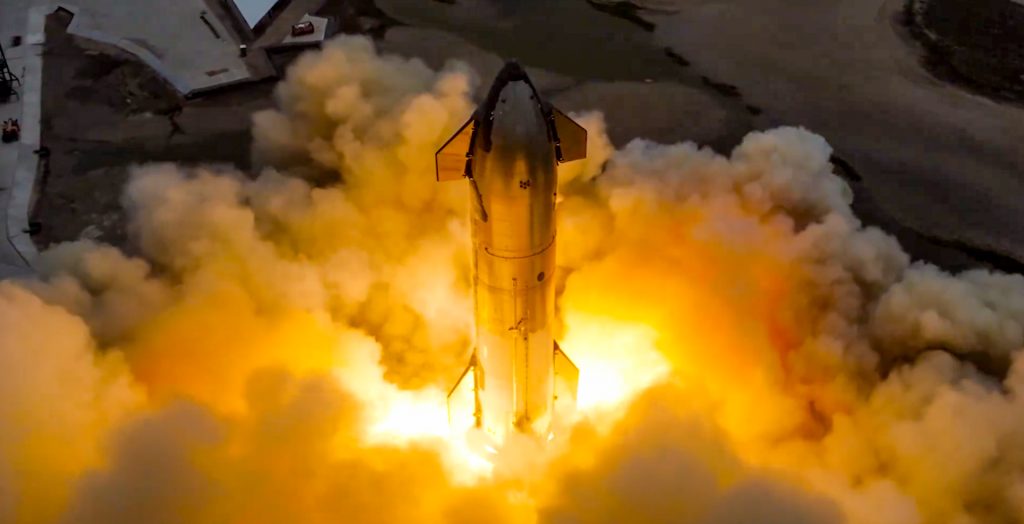SpaceX, under the visionary leadership of Elon Musk, has redefined the way the world thinks about space travel. The company’s most ambitious project, Starship, is the cornerstone of Musk’s long-term goal to colonize Mars.
With multiple test flights already behind them, Musk has now shifted the focus toward the future, specifically, the 10th launch of the fully integrated Starship-Super Heavy system. During a recent discussion, Elon Musk hinted at the target and objectives for this pivotal mission, shedding light on both technical milestones and broader strategic goals.
A Brief Recap of Starship’s Journey
Before diving into the upcoming 10th launch, it’s important to understand how far Starship has come. The spacecraft is designed as a fully reusable system to carry both crew and cargo into Earth orbit, the Moon, and ultimately Mars.
The first fully stacked launch of Starship occurred in April 2023. Though it ended in an explosion before stage separation, each subsequent test flight has brought SpaceX closer to its goals. Iterations have focused on improved staging, thermal protection systems, and successful re-entry. By the time of the 9th flight, SpaceX had demonstrated partial success in returning Starship to the Gulf of Mexico under more controlled conditions.
Elon Musk’s Vision for the 10th Launch
In a recent public Q&A hosted on X (formerly Twitter) Spaces, Elon Musk spoke about the goals for Starship’s 10th flight. According to Musk, the main objectives are:
- Achieve full reusability – Musk emphasized that for Starship to be economically viable, both stages must be recovered and reused rapidly, similar to commercial airliners. The 10th launch is projected to include a controlled return and landing of the Super Heavy booster on land, and a soft ocean splashdown for the upper stage.
- Orbital refueling demonstration – While the actual in-space refueling might not occur in this flight, Musk confirmed the 10th mission would carry a test version of the “propellant transfer” system and possibly perform a dry-run test in orbit.
- Payload deployment simulation – Although the mission may not carry real customer payloads, Musk said it would simulate a cargo deployment sequence. This helps test the vehicle’s capability to deliver satellites or scientific instruments to orbit.
- Improved TPS testing – The thermal protection system (TPS) tiles on Starship are critical for surviving reentry. The 10th flight will feature the latest version of the heat shield, incorporating lessons learned from earlier flights where several tiles were lost during descent.
- Catch attempt of booster – If successful, it would be a historic first and drastically reduce turnaround times between flights.
Why the 10th Launch Is a Turning Point
While each flight so far has represented incremental progress, the 10th launch is viewed as a pivotal step because it aims to fulfill most of Starship’s core design promises in a single mission: full-stack reuse, orbital operations, and precision landing. This flight could signal the transition from an experimental testbed to a quasi-operational launch system.
Launching again in ~3 weeks
— Elon Musk (@elonmusk) July 14, 2025
SpaceX has always embraced a “build-test-fly-fail-learn” methodology, and Starship embodies that approach at an unprecedented scale. Musk remarked during the Q&A: “If we can make launch 10 as successful as we’re targeting, I think we’ll be very close to a reliable, reusable space vehicle.”
Regulatory and Infrastructure Challenges
One of the key hurdles for the 10th flight, as with previous ones, is regulatory approval. SpaceX works closely with the Federal Aviation Administration (FAA), and each Starship launch requires a new license due to its experimental nature. Musk noted that SpaceX is coordinating extensively with the FAA, NOAA, and other stakeholders to ensure compliance.
On the infrastructure side, SpaceX has been upgrading the launch complex at Boca Chica (Starbase), including reinforced flame deflectors and water deluge systems. These upgrades are necessary to withstand the immense force generated by the 33 Raptor engines powering the Super Heavy booster.
The Bigger Picture: Mars, Moon, and Beyond
Musk’s announcement comes at a critical time as NASA prepares for the Artemis III mission, which will use a version of Starship as a lunar lander. The successful execution of the 10th flight would reassure NASA and international partners that Starship is on track to fulfill its role in humanity’s return to the Moon.
More broadly, Musk reiterated his belief that humanity must become a multiplanetary species. “Earth won’t be safe forever,” he said, referencing existential risks like climate change, nuclear war, or asteroid impacts.
Timeline and Expectations
While no specific date was given for the 10th launch, insiders suggest it could occur by late 2025 or early 2026, depending on the outcome of Flights 8 and 9. Musk is known for his aggressive timelines, which often face delays due to technical and regulatory bottlenecks. However, even critics acknowledge that SpaceX’s pace of iteration is unmatched in the aerospace industry.
Final Thoughts
The Starship program represents one of the most ambitious engineering projects in human history. Elon Musk’s revelation of the goals for its 10th launch not only marks a milestone in technical capability but also a broader shift toward routine, scalable space travel. If successful, the 10th flight won’t just be a triumph for SpaceX—it could redefine our future among the stars.

